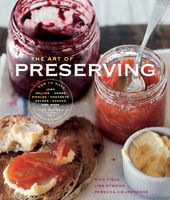Label
All
0
Clear all filters
🔥 Try our grilling cookbooks and save 25% on ckbk membership with code BBQ25 🔥
Appears in
By Lisa Atwood, Rebecca Courchesne and Rick Field
Published 2012
Acids are a vital element in making shelf-stable pickles. Properly sealed jars of pickles can remain on the shelf for a long period of time because they have achieved an acceptable level of acidification, the pH of the contents (pickles and brine) has been stabilized, and all bacteria have been eradicated.
Acid in pickling takes two forms: vinegar and citric acid. Vinegar, an acetic acid, works on pickled vegetables to stabilize their pH levels. Different vinegars have different degrees of strength, or grain. Most vinegars commonly used in pickling have a grain strength of 5 or 6 percent. Avoid using vinegars with a grain strength lower than what the recipe requires, as this may result in pickles that don’t acidify properly. Citric acid takes the form of juice from citrus: lemon, lime, and orange. It brightens and embellishes the flavors of pickles and complements other ingredients, but it doesn’t usually provide the basis for acidification.
Become a Premium Member to access this page
Unlimited, ad-free access to hundreds of the world’s best cookbooks
Over 160,000 recipes with thousands more added every month
Recommended by leading chefs and food writers
Powerful search filters to match your tastes
Create collections and add reviews or private notes to any recipe
Swipe to browse each cookbook from cover-to-cover
Manage your subscription via the My Membership page
Best value
Part of
Advertisement
Related Recipes
-
-
-
-
Related Reference
-
-
-
-
Advertisement
The licensor does not allow printing of this title





